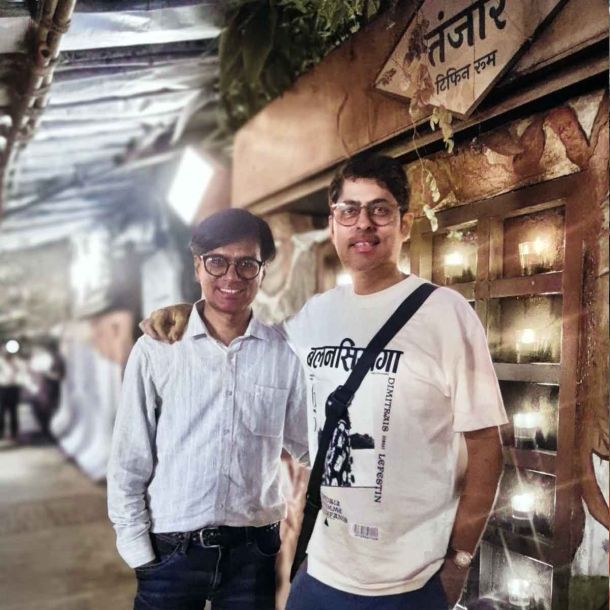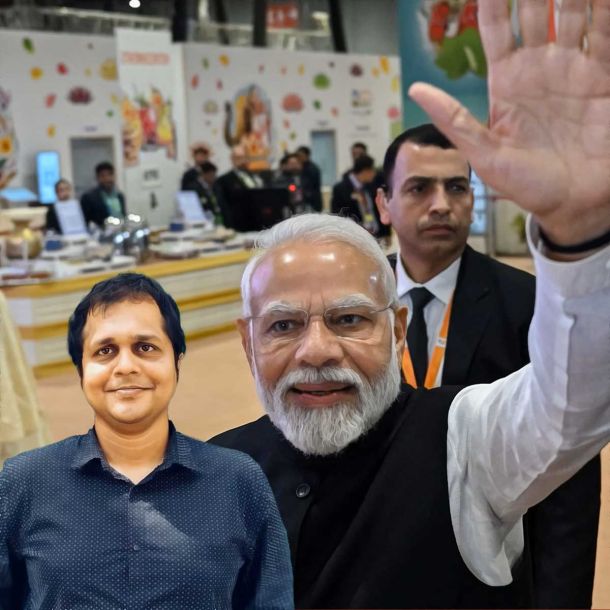More Coverage
Twitter Coverage
JOIN SATYAAGRAH SOCIAL MEDIA
"हम-तुम अलग हैं फ़र्क है": In a stunning display of judicial leniency, Pune's wealthy builder’s drunk teen son, who killed two with his Porsche, was swiftly granted bail—only to face the harrowing task of writing a 300-word essay and making traffic boards

Early on Sunday morning, a fast-driving Porsche lost control in East Avenue, Kalyani Nagar, Pune. The car, which people said was driven by a drunk teenager named Vedant Agarwal, hit several other vehicles and then crashed into a pavement. This terrible crash resulted in the deaths of a man and a woman, Anis Awadhia and Ashwini Costa.
|
After the crash, people nearby ran to help those who were hurt. They also caught Vedant, who they claim tried to run away from the scene. Vedant is the son of a well-known builder, Vishal Agarwal, who owns Brahma Realty and Infrastructure. Even though this was a serious incident, Vedant was only in jail for a very short time.
Vedant was taken to the Yerawada police station, and a famous lawyer, Prashant Patil, who works for his father, managed to get him out on bail in just 15 hours. The judge allowed Vedant to go free but told him he must follow certain rules while on bail. Patil told reporters that Vedant knows he has to stick to these bail conditions. The quick release and the simple bail condition given by the judge show a justice system that sometimes seems to go easy on the rich.
The Juvenile Justice Board of Pune acted with surprising speed to grant bail to a 17-year-old boy, barely hours after he was arrested. The boy, accused of inadvertently causing the deaths of two individuals while driving his Porsche at an alarmingly high speed, found leniency in the eyes of the law.
The tragic incident occurred when the teenager’s high-speed vehicle collided with a bike, claiming the lives of two people. Despite the gravity of the event, the Juvenile Justice Board (JJB) of Pune chose a mild course of action. As part of his bail conditions, he is not only to remain under the watchful eye of his parents but is also tasked with an educational yet peculiar assignment. The JJB ordered him to pen a 300-word essay on road accidents. This task is to be completed after thoroughly studying the traffic rules and regulations at the Regional Transport Office (RTO).
In their official statement, the JJB elaborated on the bail terms: "The child in conflict with law (CCL) is released on bail on executing his personal bond and surety bond of ₹7,5000 [Seven Thousand Five Hundred Rupees]." This decision, wrapped in legal jargon, subtly underscores the board’s gentle handling of a serious offense, spotlighting a judicial system that appears to extend a soft hand towards youthful offenders, especially those from affluent backgrounds.
The Juvenile Justice Board of Pune, in a decision that almost reads like a school disciplinary note rather than a response to a serious traffic offense, has laid out a set of conditions that seem more educational than punitive for a 17-year-old boy involved in a deadly crash.
|
In a somewhat parental tone, the JJB listed conditions reminiscent of a stern lecture from a well-meaning but slightly out-of-touch uncle. Here's what they’ve asked of the juvenile, referred to as the CCL - Child in Conflict with Law:
Parents shall ensure that the CCL will steer clear of further offenses and keep away from bad influences; almost like saying, "Don't hang out with the wrong crowd."
Parents must make sure the CCL appears before the Board whenever asked; a bit like a mandatory parent-teacher meeting.
The juvenile must visit the Regional Transport Office, learn all traffic rules, and then make a presentation to the JJB within 15 days; perhaps PowerPoint skills will also be judged?
He is to pen a 300-word essay on the impact of road accidents; hopefully, this will include more insight than a high school assignment.
For 15 days, he will shadow an RTO officer and report his findings back to the JJB; a sort of mini-internship at the RTO.
A visit to a de-addiction counseling center is on the books, with a report on the counseling to be submitted to the JJB.
Consultation with a psychologist and psychiatric doctor at Sassoon hospital in Pune is required, with that report also due within 15 days.
|
The array of educational tasks and check-ins prescribed by the JJB not only underscores a certain bureaucratic creativity but also highlights a softer approach that might seem a tad lenient given the gravity of the incident. It's almost as if the judicial system has momentarily swapped its gavel for a school teacher's pointer, guiding rather than punishing, in a context where the consequences were undeniably grave.
The young man, identified only as the son of a notable Pune builder, found himself facing accusations of rash and negligent driving and causing harm by endangering the safety of lives and death by negligence, as stipulated under sections 304A, 279, 337, and 338 of the Indian Penal Code (IPC), along with related provisions of the Maharashtra Motor Vehicles Act.
Further complicating matters, a report by The Indian Express highlighted that the juvenile was also booked under Section 304 (culpable homicide not amounting to murder) of the IPC, indicating a possibility of him being tried as an adult. This added a layer of seriousness to the case, suggesting a potential shift from juvenile leniency to the harsher realms of adult jurisprudence.
|
Amidst these unfolding legal complexities, the narrative took another twist with media reports stating that not only the juvenile but also his father and the pub, which allegedly served liquor to the minor, were roped into the legal fray, booked by the police for their respective roles in the incident.
Within mere hours of the accident, the juvenile was presented before the Juvenile Justice Board (JJB). In what could be pictured as a courtroom drama scene, his lawyer, Advocate Prashant Patil, made a fervent plea for bail. Patil argued convincingly that his client would neither tamper with the evidence nor attempt to flee the jurisdiction of the court, painting a picture of a compliant youth momentarily led astray.
Adding to this family tableau, the teenager's grandfather provided a solemn promise to the JJB. He assured that his grandson would redirect his focus towards academic pursuits or a vocational course and would steer clear of any negative influences. This familial pledge seemed aimed at convincing the board of the juvenile’s potential for rehabilitation, neatly packaged with a commitment to reform and reintegrate into the fabric of law-abiding society. This series of assurances and legal maneuvers paints a picture of a judicial dance, where legal outcomes may hinge as much on the persuasiveness of promises as on the weight of the law.
|
Bail conditions of billionaire’s son raise eyebrows
In a turn of events that seems ripped from the pages of a satirical legal drama, the teenage son of a wealthy builder was granted a notably swift bail under conditions that have caused quite a stir. The 17-year-old Vedant, who was caught exiting a posh club in Pune at 2:30 AM, reportedly under the influence and in control of his speeding Porsche, has been placed under unique rehabilitative measures by the Juvenile Justice Board.
The conditions set forth for Vedant include working alongside a traffic police official for two weeks and attending psychiatric counseling sessions. Furthermore, he is tasked with writing a 300-word essay on road accidents and creating traffic awareness boards—a seemingly mild reprimand for the gravity of his alleged offenses. This lenient set of requirements, especially in light of the severe consequences of his actions, has sparked a flurry of debate across social media platforms. Many are voicing concerns and questioning whether the scales of justice are tipped favorably towards those of affluent backgrounds.
This discourse extends beyond mere speculation, as the speedy release of the young Agarwal after such a serious incident illuminates potential disparities in the judicial treatment of the wealthy versus the less privileged. Critics argue that these bail conditions, while ostensibly aiming to educate and rehabilitate, may not proportionately address the severity of the situation nor act as a sufficient deterrent against future reckless behavior.
Further complicating the public outcry is the additional information that Vedant’s father, Vishal Agarwal, along with the owner of the bar that allegedly served alcohol to underage Vedant, have also been booked by the Yerawada police. This development suggests a broader investigation into the circumstances leading up to the incident, yet does little to quell the skepticism surrounding the perceived leniency of the law when it involves individuals of considerable means.
|
The young driver, merely 17 years old, finds himself accused under a handful of stringent legal provisions. These include rash and negligent driving and causing harm by endangering life or personal safety under IPC sections 304A, 279, 337, 338, and 427. Additionally, charges under relevant sections of the Maharashtra Motor Vehicle Act have been piled on, as confirmed by the Deputy Commissioner of Police.
This slew of charges might paint a picture of a robust legal response, yet it also underlines a certain procedural foregone conclusion when the accused is a minor with significant familial resources. The tone of the police announcement, packed with legal references, provides a stark contrast to the aftermath of the accident itself, where the juvenile was quickly released on bail under conditions that seem almost educational rather than punitive.
The narrative thickens as not only the juvenile but also his father and the bar that allegedly served him alcohol are brought into the legal fray. The father faces charges under Sections 75 and 77 of the Juvenile Justice Act, as do the proprietors of the bar, highlighting a broader attempt by the city police of Pune to address not only the immediate incident but also the contributing factors leading up to it.
This broader charge sheet suggests a comprehensive crackdown on all responsible parties, yet it does little to dampen public skepticism regarding the efficacy and impartiality of the justice system, particularly when wealth and social status come into play. The charges, extensive as they are, unfold against a backdrop of a quick bail and seemingly lenient conditions for rehabilitation, sparking discussions and debates about the possible elasticity of the law when it stretches to accommodate the affluent.
As this legal saga unfolds, it serves as a case study in the intersection of justice, privilege, and public perception, prompting a reevaluation of how justice is administered and perceived in high-profile cases involving minors from influential backgrounds.
 |
 Support Us
Support Us
Satyagraha was born from the heart of our land, with an undying aim to unveil the true essence of Bharat. It seeks to illuminate the hidden tales of our valiant freedom fighters and the rich chronicles that haven't yet sung their complete melody in the mainstream.
While platforms like NDTV and 'The Wire' effortlessly garner funds under the banner of safeguarding democracy, we at Satyagraha walk a different path. Our strength and resonance come from you. In this journey to weave a stronger Bharat, every little contribution amplifies our voice. Let's come together, contribute as you can, and champion the true spirit of our nation.
 |  |  |
| ICICI Bank of Satyaagrah | Razorpay Bank of Satyaagrah | PayPal Bank of Satyaagrah - For International Payments |
If all above doesn't work, then try the LINK below:
Please share the article on other platforms
DISCLAIMER: The author is solely responsible for the views expressed in this article. The author carries the responsibility for citing and/or licensing of images utilized within the text. The website also frequently uses non-commercial images for representational purposes only in line with the article. We are not responsible for the authenticity of such images. If some images have a copyright issue, we request the person/entity to contact us at This email address is being protected from spambots. You need JavaScript enabled to view it. and we will take the necessary actions to resolve the issue.
Related Articles
- "ATM is now Closed": Puneet Khurana, co-founder of For God's Cake & Woodbox Cafe, died by suicide, blaiming harassment by wife Manika Pahwa & in-laws over ₹10L demands, ₹2Cr property disputes, ₹70K/month legal fees, and domestic abuse
- "Some judges are like umpires who believe they won the game": Madras High Court, "If temples are going to perpetuate violence, then their existence has no meaning, better to close down those temples. The whole purpose of having a temple is of no use"
- "If it were not for injustice, man would not know justice": Supreme Court stayed arrest of the resigned principal of Indore's Government New Law College, Dr Inamur Rahman, in an FIR registered over "Hinduphobic" book in the college library
- "Freedom is whatever the Court says it is, pending revision": Kiren Rijiju in Rajya Sabha, "Until we create a new system for Appointment of Judges, issue of Judicial Vacancies will continue to arise which is a big reason for the huge pendency of cases"
- 'Every sinner has a future': Bombay HC suspends Nijam Asgar Hashmi's life sentence, convicted for beheading Umesh Ingale, his girlfriend’s cousin; questions evidence led by Hashmi, who invited Ingale for "sheer khurma" on Eid just to get rid of him
- "अब आयो ऊंट पहाड़ नीचे": A Bareilly court convicts Mohammed Alim for Love Jihad, tricking a woman into conversion and abortion, giving him life in prison, penalizing his father, and warning of conversion threats like in Pakistan and Bangladesh
- “Chaos is merely order waiting to be deciphered”: MoP issue settled; government cannot conveniently cite views of few judges on MoP to oppose Collegium recommendations, scheme of our constitution requires court to be final arbiter of law ~ Supreme Court
- "Ayodhya hui hamari, ab Kashi-Mathura ki baari": Plea submitted in Mathura Court to secure Shahi Idgah Masjid to protect Hindu sacred artefacts after Shivling discovered at wuzukhana in Gyanvapi premises
- "न्याय, मलाई मार के": In 1992, hundreds of Hindu girls were exploited in the Ajmer gangrape case by 'Khadims' of the Dargah and ex-Congressman Nafis Chisti, with the perpetrators only being convicted by the POCSO court after a long, grueling 32 years
- "I am not inclined": In a pivotal turn, the Gujarat HC hints at no reprieve for Teesta Setalvad, accused of crafting 'mass graves' stories post-Gujarat riots, associate Rehman Khan's allegations point to her ordering the controversial exhumation of bodies






















